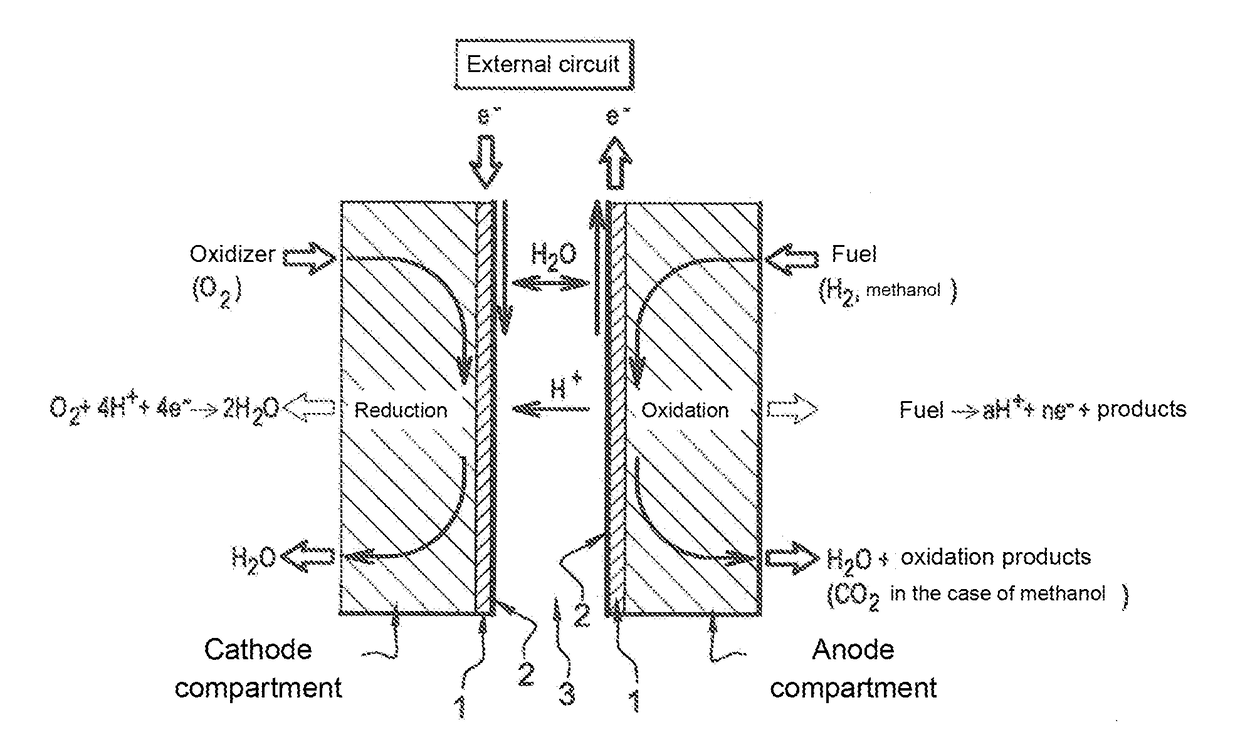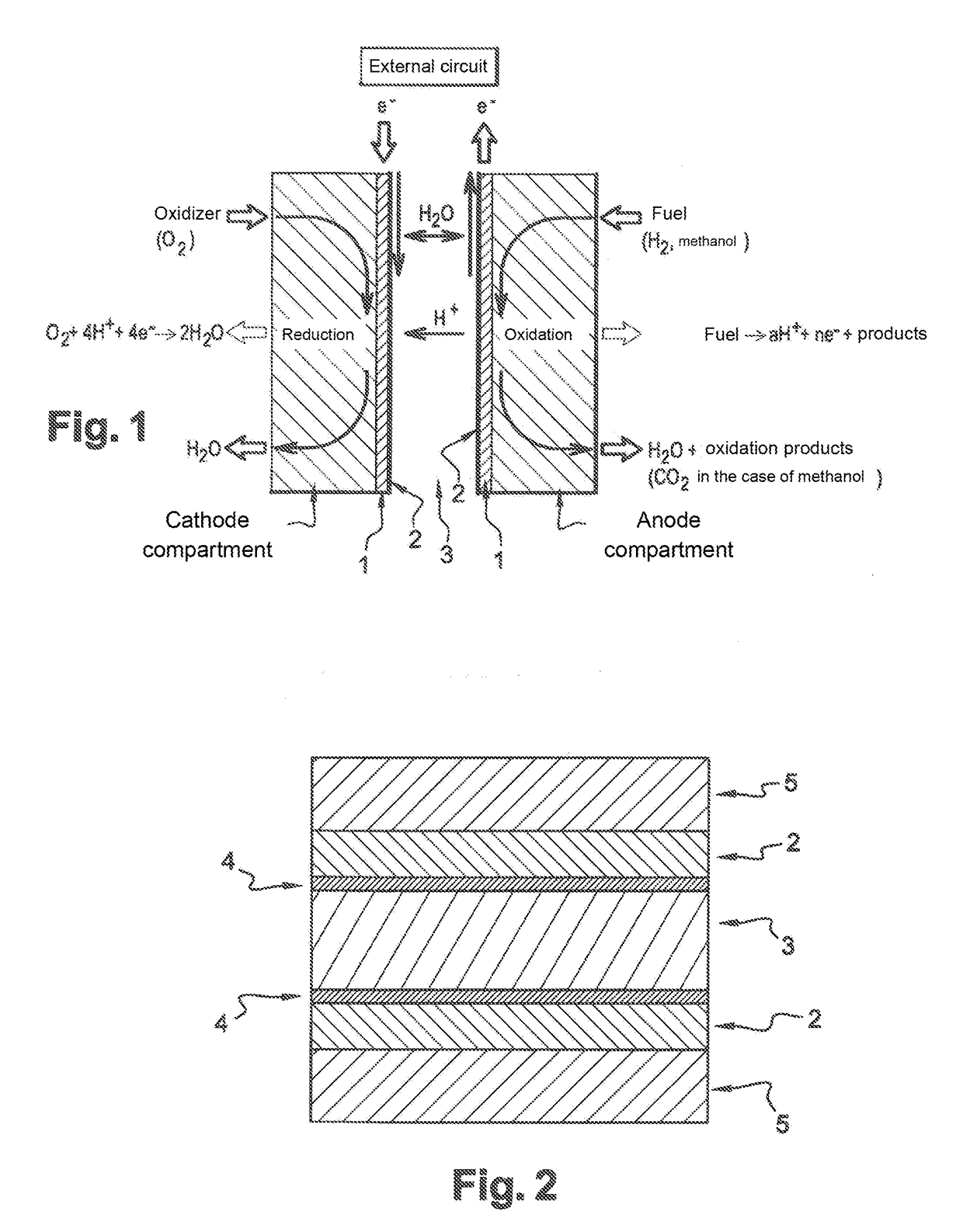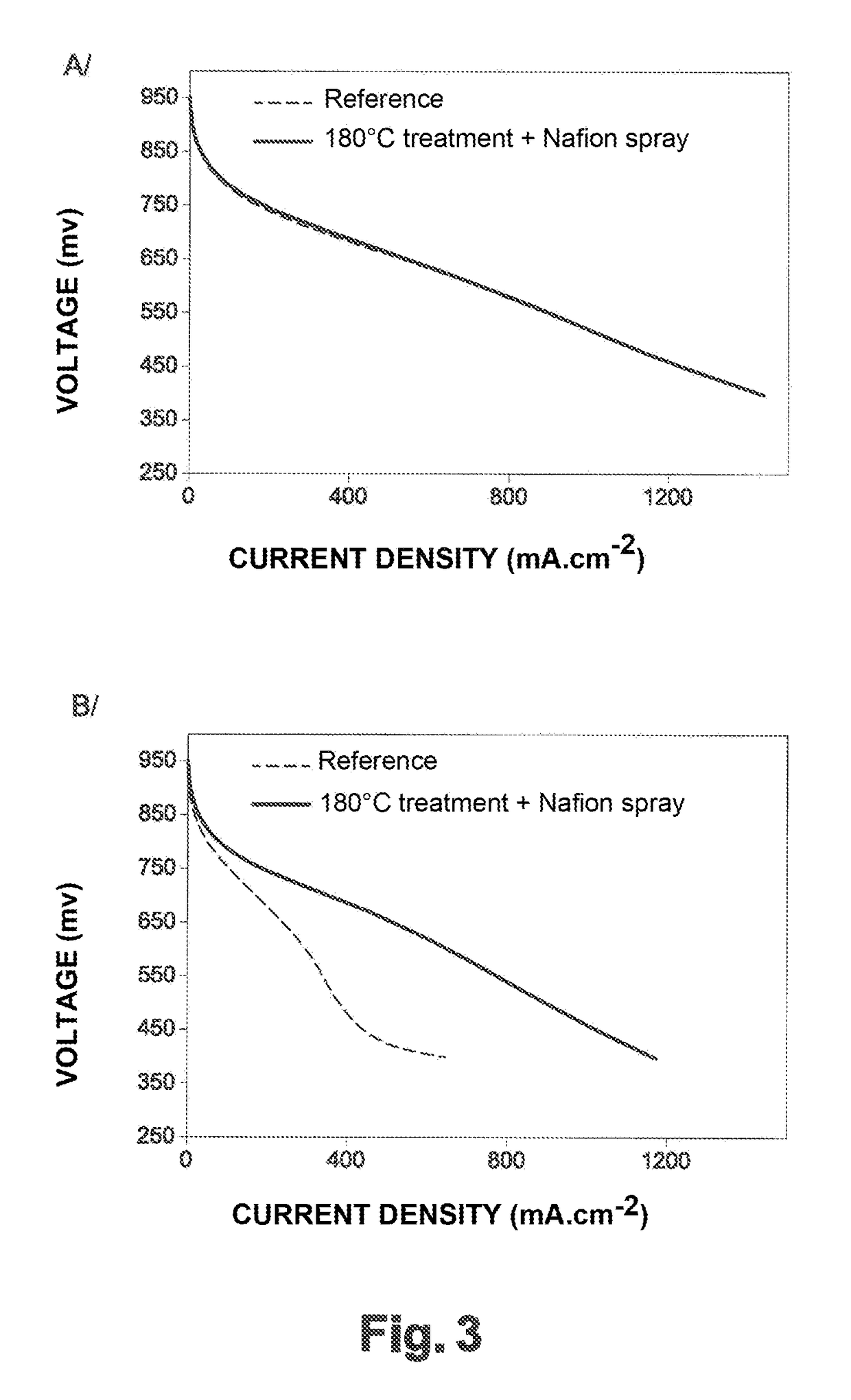Membrane-electrodes assembly for proton exchange fuel cells (PEMFC), and manufacturing method
a proton exchange membrane and fuel cell technology, applied in the manufacture of fuel cells, fuel cells, electrochemical generators, etc., can solve the problems of increasing manufacturing costs, affecting the performance of fuel cells, and affecting the efficiency of fuel cells, so as to improve the membrane-electrode interface, improve the performance, and improve the durability
- Summary
- Abstract
- Description
- Claims
- Application Information
AI Technical Summary
Benefits of technology
Problems solved by technology
Method used
Image
Examples
embodiment
OF EMBODIMENT
[0140]The present invention will be further illustrated in relation with a specific embodiment, that is, a MEA comprising:[0141]an Aquivion®-type membrane (3);
[0142]As a reminder, Aquivion®, for example, commercialized by Solvay, has a glass transition temperature, noted Tg, in the range from 140 to 150° C. and the following structure (k being an integer):
[0143][0144]an anode and a cathode (2) also comprising Aquivion®.
[0145]The electrodes typically contain:[0146]1 / 72% of platinum-type catalyst dispersed on a carbonaceous support, for example, carbon black. The assembly is formed of 50% of platinum and of 50% of carbon;[0147]2 / 28% of ionomer, in the case in point, Aquivion®.
[0148]The % should be understood as mass percentages in the dry catalytic layer:[0149]a Nafion®-based layer (4);
[0150]As a reminder, Nafion®, for example, commercialized by Dupont, has a glass transition temperature, noted Tg, in the order of 90-100° C. and the following structure (k being an integ...
PUM
| Property | Measurement | Unit |
|---|---|---|
| glass transition temperatures | aaaaa | aaaaa |
| glass transition temperature | aaaaa | aaaaa |
| glass transition temperature | aaaaa | aaaaa |
Abstract
Description
Claims
Application Information
 Login to View More
Login to View More - R&D
- Intellectual Property
- Life Sciences
- Materials
- Tech Scout
- Unparalleled Data Quality
- Higher Quality Content
- 60% Fewer Hallucinations
Browse by: Latest US Patents, China's latest patents, Technical Efficacy Thesaurus, Application Domain, Technology Topic, Popular Technical Reports.
© 2025 PatSnap. All rights reserved.Legal|Privacy policy|Modern Slavery Act Transparency Statement|Sitemap|About US| Contact US: help@patsnap.com



